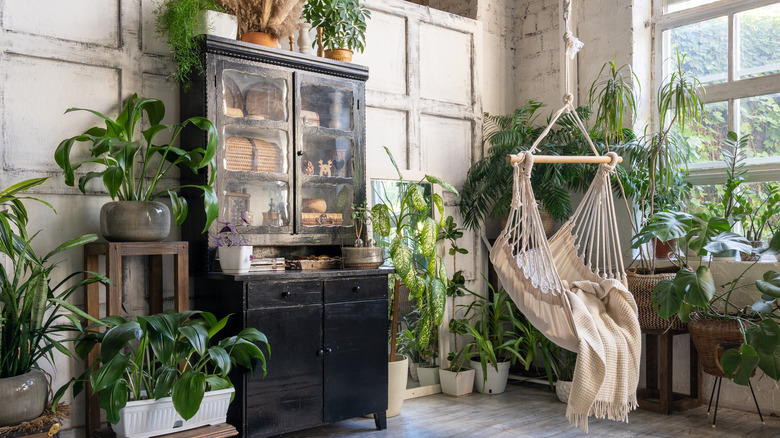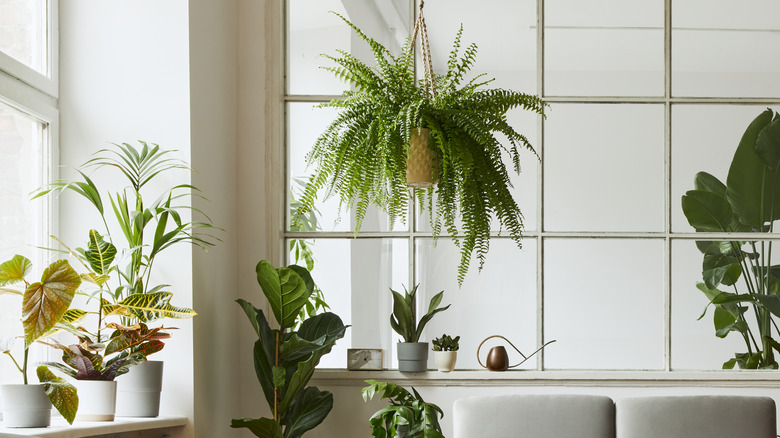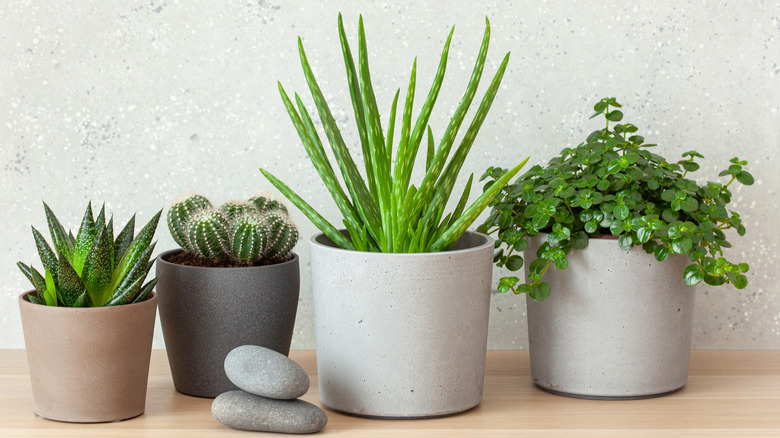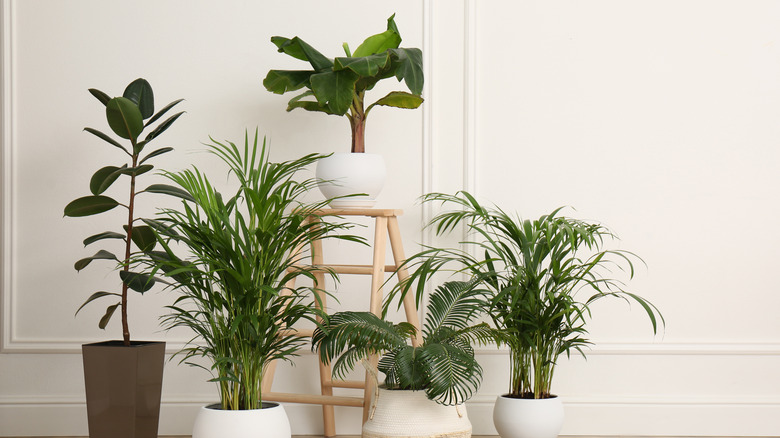How To Pick The Perfect Indoor Plant For Small Spaces
When you have a small space, you have to be creative about the way you liven it up. Adding some greenery is one way that many experts agree can bring life into your home. Plants are relatively inexpensive, so they're a great way to fill those spaces in your home that you may not know what to do with. And because they come in a variety of sizes, you're sure to find one that can fit the exact dimensions you need.
With a variety of species, there's a perfect plant for every home and a unique way to style them so that they always fit in your interior design. Melyssa Griffin loves the brightness that plants bring to a space. She suggested a few ways to incorporate plants that will work for small spaces, like hanging from macrame planters or letting vines trail from a high shelf. Using a single frond or branch is also great when you're trying to save space. But how do you find the right indoor plant for your home? Here are a few tips for picking the perfect plant for a small space.
Evaluate your light conditions
Before buying any plants, you have to evaluate the light conditions in your space. What kind of light the room gets will determine what kind of plants you should have. Lighting conditions are broken down as either direct or indirect light. Direct light means the plant will receive intense light because it's receiving light directly from the sun's rays. Indirect means the lighting is a little more diffused and may not have sunlight coming straight into the window. Indirect light is further broken down into bright-indirect, which has steady and bright light but not in the sun, and medium indirect light, which is further from a window but still receives steady light. Low light is a space that gets little or no natural light.
How do you determine what kind of light your space gets? It's all in the way your windows face, says La Residence. In the Northern Hemisphere, north-facing windows always get medium light or bright indirect light. South-facing windows get direct, bright indirect, and medium light. When facing east, plants receive direct, bright indirect, and medium light. And facing west, you'll get strong direct sunlight in the afternoon and bright indirect and medium light as well.
Familiarize yourself with small species
Now knowing what kind of light your space gets, you know what kind of plants to look for. But you also have to be cautious about which plants you should buy if you have a small space. Though most house plants have adapted to being indoors by being smaller, in the wild, many have leaves that can grow as large as a human. Though it can be rare for leaves to grow this large indoors, it's not impossible with the right growing conditions. You may want to keep this in mind as you choose which plants for your space.
If you have a small space, consider looking for houseplants that stay compact while still providing pretty foliage and blooms. Smaller plants allow you to place them in tight spaces or put them up on a shelf to keep some floor space free. OMYSA suggests air plants, Chinese money plants, polka dot plants, pothos, and succulents like jade plants and echeverias. You also want to be cautious with plants that trail or vine as this can take up more space than you may have allocated.
Cluster plants together
You should use houseplants as a decorative accent in your home. But when you don't have a lot of space, you have to be strategic about your placement. Of course, your priority should be keeping your plants in their desired light condition in order for them to thrive. Once you identify the lighting in your room, you can bring out your inner interior gardener and design a plant-filled space.
If you have multiple plants, clustering them together can create a microclimate, says Horticulture. This can help increase the humidity levels that many plants need to thrive. Keeping your plants together can also save you space elsewhere in your home. Utilize levels to not only add a visual appeal but also to save floor space and make your plant area more compact. You can do this by using a standing shelf, wall shelves, or plant stands. Trays can help you avoid dirt and water from getting on the floor if you have a larger plant that can't sit on a shelf.



